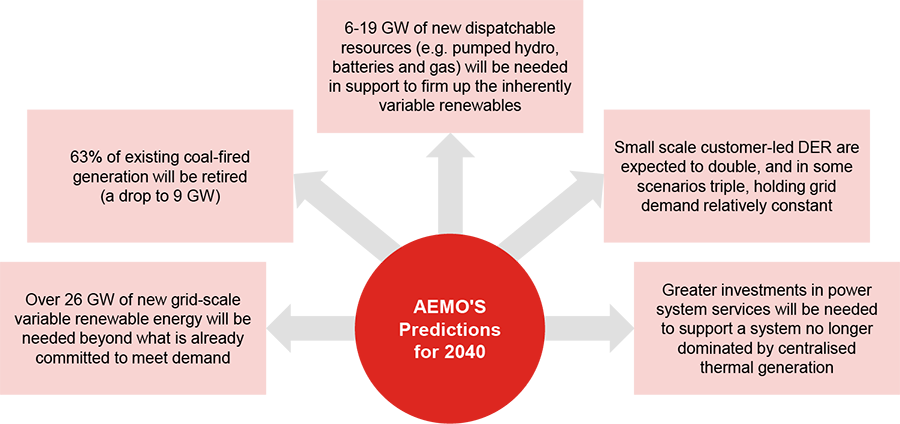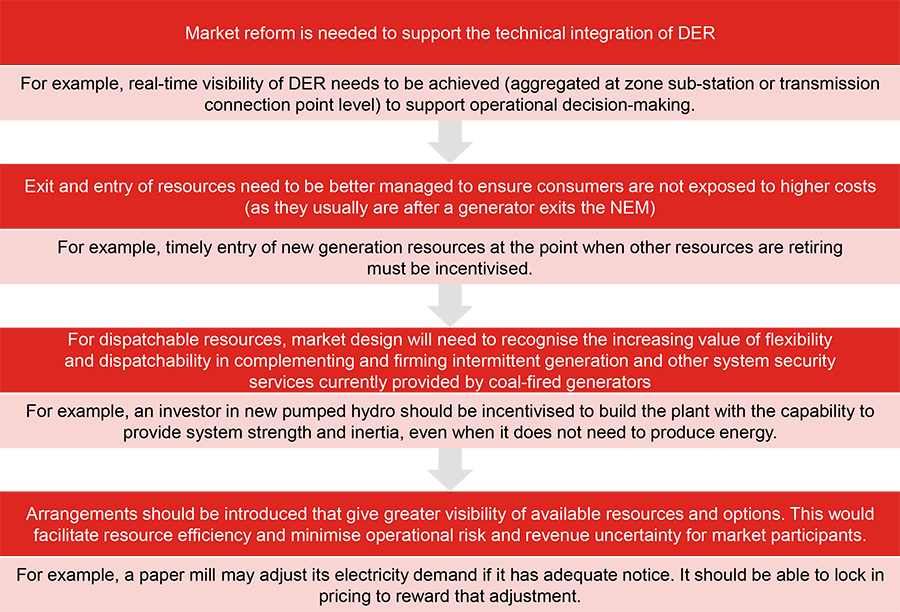This article was co-authored with Rachel Murphy.
The Australian Energy Market Operator has recently published its 2020 Integrated System Plan. The ISP is intended to provide an “actionable” 20-year roadmap for Australia’s National Electricity Market to address the structural changes occurring in the energy sector.
As AEMO becomes increasingly proactive in system operations and planning, it has consulted broadly and sought to devise a coherent plan. In doing so, it should be credited with formulating a pathway for a renewables transition and an agenda to assist more of the industry to pull in the same direction.
Relevance of the ISP
Most of those predicting the future of Australia’s energy market accept that over the next decade, a large proportion of existing coal-fired generation will be retired and replaced by renewable energy resources, including both distributed energy resources (DER) like rooftop solar, and larger-scale renewable “power stations” some of which may cohabitate in identified renewable energy zones (REZs). The ISP is AEMO’s attempt to bring some level of certainty to what this future will look like, and how to prepare for it. It is an important document for all energy industry participants, as it will have far-reaching implications for the direction of energy investment and regulation for the next two decades and onwards.
Structural changes facing the National Electricity Market
Key messages from the ISP are that the energy evolution will need to be supported by significant investment in power system security and services, including dispatchable resources and network solutions. Such investment will need to be incentivised by appropriate market reforms.
It is important to recognise that the future presents various opportunities, the key ones identified by AEMO are as follows:

Network investments in the optimal development path
The ISP identifies 18 network investments that will need to be made as part of AEMO’s ‘optimal development path’, to fulfil NEM cost security and reliability expectations through the complex energy sector transition outlined above. These investment projects comprise:
- projects already underway;
- actionable projects, either already progressing or planned to commence after the publication of the ISP, some of which will require additional decision rules (which can be assessed during the regulatory tests for transmission processes); and
- future projects, for which AEMO requires the responsible TNSPs to carry out preparatory activities, including publishing a report by 30 June 2021.
‘Actionable’ projects include:
- upgrades to the VIC-NSW interconnectors;
- a new interconnector between NSW and SA;
- a transmission upgrade to reinforce the NSW southern shared network and increase transfer capacity between the Snowy Mountains hydroelectric schemes and the region’s demand centres; and
- network augmentations to support the development of the Central-West Orana REZ.
“Broad suite” of market reforms foreshadowed
AEMO also foreshadows a number of changes to market rules to appropriately incentivise investment to achieve the goals of the ISP, including the following.

AEMO rightly notes that “consumer benefits will only be realised if market arrangements encourage the optimal use of existing resources and give appropriate signals for further investment”. A failure to achieve the required reforms may mean necessary resources are not be delivered in time and the system will have to rely on other mechanisms ‒ like transmission investment (more expensive, and paid for by energy users) ‒ to compensate for the lack of adequate resources.
Watch this space
There are a number of overlapping timelines for various market reform projects, and they are led by a range of bodies, including those being reconstituted under COAG reforms. While some reforms have already commenced, other reform is likely to occur gradually over time as a number of discrete decisions are reached. It will be important for industry to keep aware of each development and provide input accordingly.
If you would like further information about the ISP, or to understand the impact it may have on your business, please do not hesitate to contact us.








